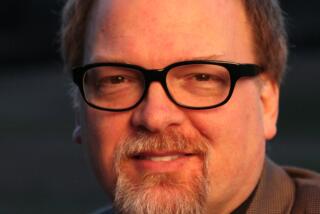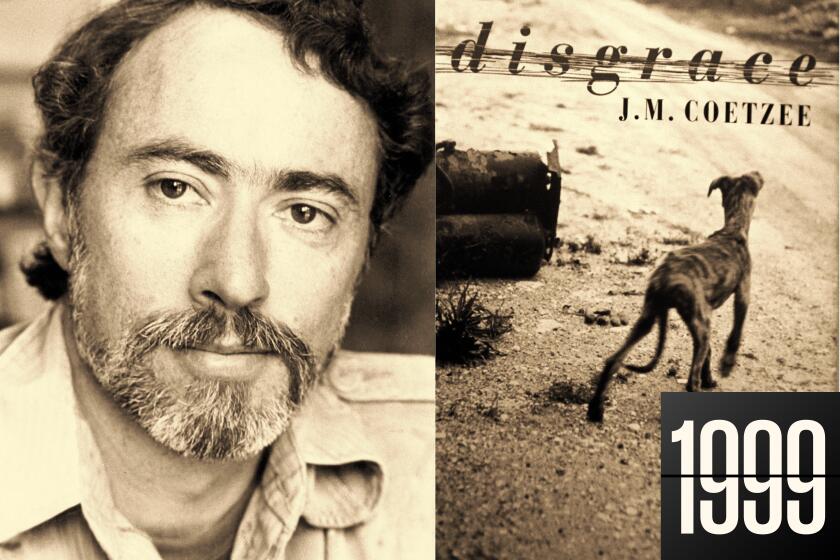Lion in winter
Henry JAMES (1843-1916) presents a special set of problems to the biographer. On the face of it, his life was uneventful -- no wars fought in, no fortune made or lost, no marriages or children or interruptions to the work. He wrote and wrote and wrote. In addition to James’ own continuous and inward-facing reportage, Leon Edel’s five-volume biography might seem to have sufficed. Those books appeared from 1953 to 1972, and in recent years more information has emerged. A critical industry has been established whose raw material is that of the artist’s notebooks and correspondence; more than 10,000 of his letters are preserved. And little would seem left to say.
“James’s surviving letters are now open to all scholars, however, and many contemporaneous accounts have been identified and published,” writes Sheldon M. Novick in his new book, “Henry James: The Mature Master.” “A new generation of scholars has been at work in these fertile fields and has portrayed James as the active, passionate, engaged man his contemporaries knew. The picture that is emerging is essentially that which James himself seems to have tried to convey and is quite different from the canonical account to which we all had grown accustomed.”
This biographer’s first volume, “Henry James: The Young Master,” concluded with the appearance of “The Portrait of a Lady” in 1881; Novick has spent a decade working on the later years. As he observed, in the previous book’s preface, “The style of [James’] last work requires patience and attention, moreover, and many of his memories are shrouded in private references and multilingual puns. He built up portraits of people and events by a pointillist technique, so that a great deal of description must be absorbed together, without direct statement of fact.
“When the necessary trouble has been taken, however, the autobiographical works provide a unique self-portrait of an acutely self-aware artist, doing his painstaking best to explain himself, the processes of his art, and the manner in which his work evolved itself from his life.”
A theme of “The Young Master” is that James -- far from being passive and erotically neutral -- was an active homosexual and not a closeted one. He was, writes Novick in the new book’s preface, “an active and engaged man, passionate and energetic, for whom relationships were the ground of life and the subject of his art.” And much of “The Mature Master” describes those relationships with a series of “handsome” fellows -- an adjective Novick uses rather too often and rather too suggestively. Instead of the austere, solitary figure portrayed by Edel, we have this portrait of the artist as a flirtatious old man.
Yet the letters, essays and notebooks offer little by way of flat fact; conclusive evidence is scant. James was genuinely fond of Robert Louis Stevenson, for example, and wrote him what could be construed as love letters -- full of such phrasing as “Your place in my affection has not been usurped by another . . . and I literally care for nothing but your return.” But there’s no doubt that this devotion was never expressed in bed. Of a period spent with the young Frenchman Paul Bourget in Dover, in 1884, Novick reports, “If James ever broke his habitual reticence to speak of the weeks they spent together in the seaport, the record has been lost.” Of a sojourn the next year in Venice, Novick writes: “James spent most of his evenings with the young, the handsome, the ‘sympathetic Bourget.’ ” These last two words come from an unpublished letter to Lady Wolseley, written in August 1885, and though it’s fine to have that language newly quoted, it fails to distinguish romantic intention from deed.
Or, to use James’ rhetoric, this writer’s fancy was so prodigal of discourse, so infinitely suggestive of fond intimacy and shared sympathy that we cannot determine, in the exacting and particular terms of consummation, if and when and with what frequency as recollected and evoked in his epistolary lucubrations -- to put it bluntly and not in his language -- push came to shove.
More to the point, does it matter? Why should we care whether James’ passionate attachments were of the body or mind? There’s a kind of heavy-breathing prurience in the whole contention as to what he did or didn’t do with whom. Novick’s argument revolves around the inaccurate assertion that a writer must have lived the scenes evoked in his or her art: “When James described some experience with apparent firsthand knowledge, when he evoked with stunning sensuality the experience of being kissed by a man or the memory of a successful seduction, his raw materials -- as he always insisted -- most likely were his own memories. Why should we suppose that he accomplished so many miracles of imagination?”
But James himself famously urged that the writer try “to be one of the people on whom nothing is lost!” His reference is to George Eliot, and the power of imagination; she did not confine herself to scenes observed firsthand. And much of his great fiction arises out of dinner table conversation or gossip overheard. If James could not enlarge upon experience actually engaged in, his writings would have been exclusively memoir. No female or foreigner, no adventurer or servant could have been portrayed with that intense evocative precision so characteristic of this author -- and many of his greatest portraits are of women, from Daisy Miller and Isabel Archer to Kate Croy and Milly Theale and Maggie Verver. The sly caricature by Max Beerbohm -- of Henry James on his knees in a hotel hallway, examining shoes left outside the door to be shined (one pair male, one female!) and therefore deducing the relationship of the couple lodged within -- remains the image here.
Novick is rather less insistent and rather more persuasive on other aspects of the work and life. He does a fine job with the lure of the theater, its commercial siren song and enduring attraction for James. He situates the fiction, biographies and travel books convincingly, marveling -- as must we all -- at the prodigious output of the “Master” in his prime. He writes well about the act of writing, the habit of dictation, about James’ devotion to family members and old and youthful friends. He’s good on Edith Wharton, Oliver Wendell Holmes (the subject of Novick’s previous biography) and such acolytes as Hendrik Andersen, Arthur Benson, Bourget, Howard Sturgis, Hugh Walpole and the rest. He describes James’ constant anxiety as to money, his restless travels and his happy final residence in Lamb House in Rye.
Best of all, perhaps, he traces the shifts in world order, America’s role on that stage, the way the ill, aging lion roared on behalf of Great Britain at the outbreak of World War I. He movingly evokes the passage of time: sickness, death. What emerges from this second volume is a multidimensional portrait of an author at his work desk, not in the bedroom -- which is, after all, what counts.
More to Read
Sign up for our Book Club newsletter
Get the latest news, events and more from the Los Angeles Times Book Club, and help us get L.A. reading and talking.
You may occasionally receive promotional content from the Los Angeles Times.






